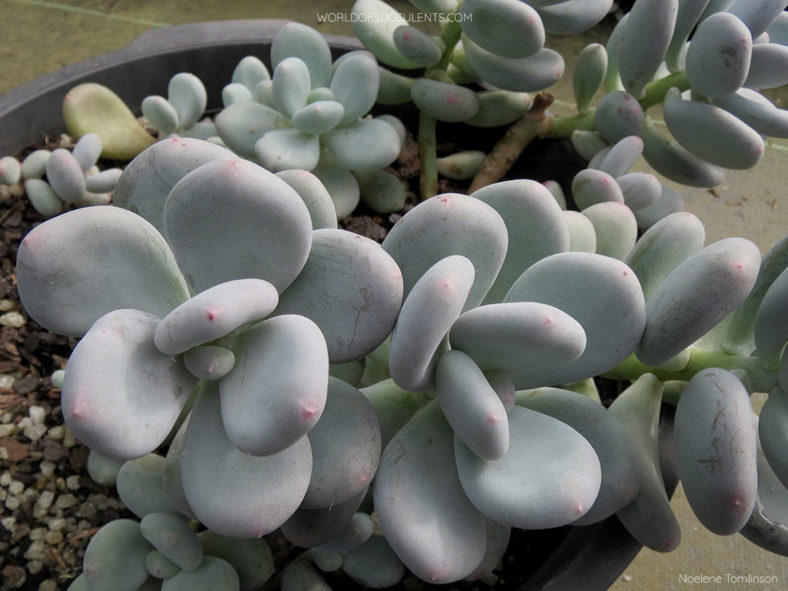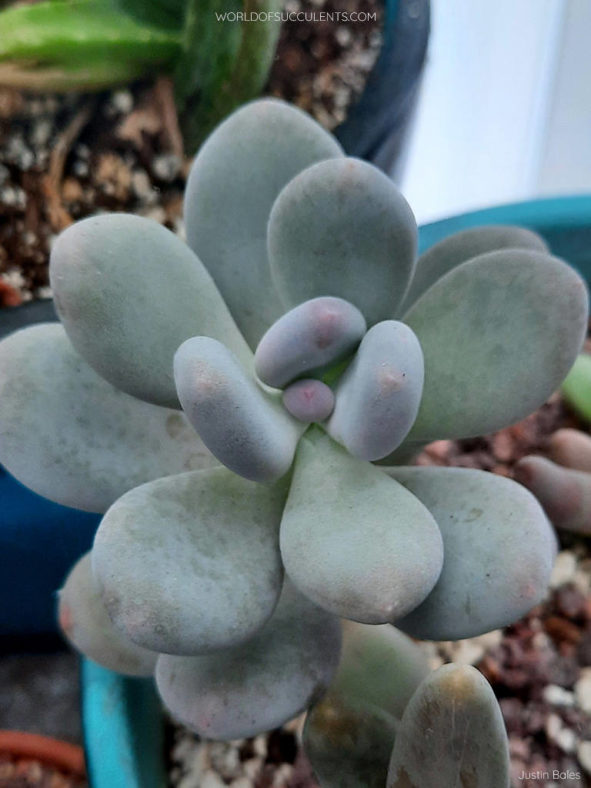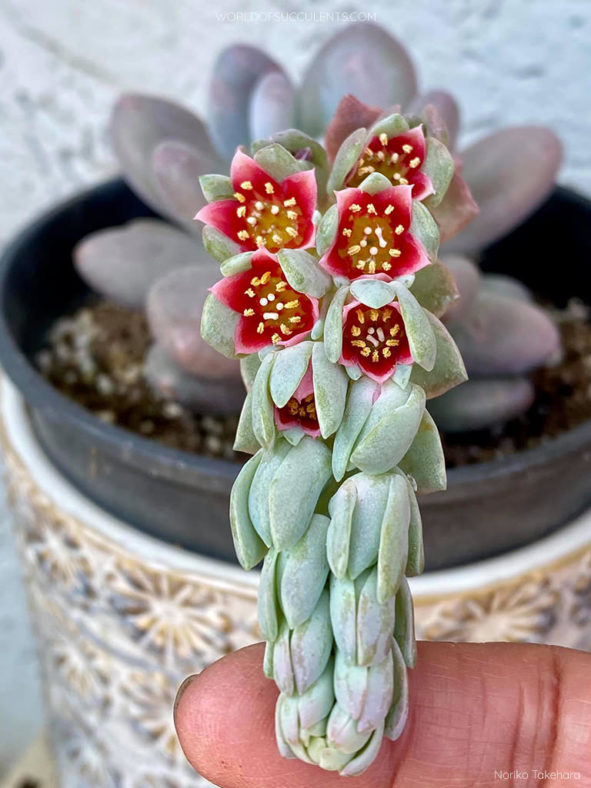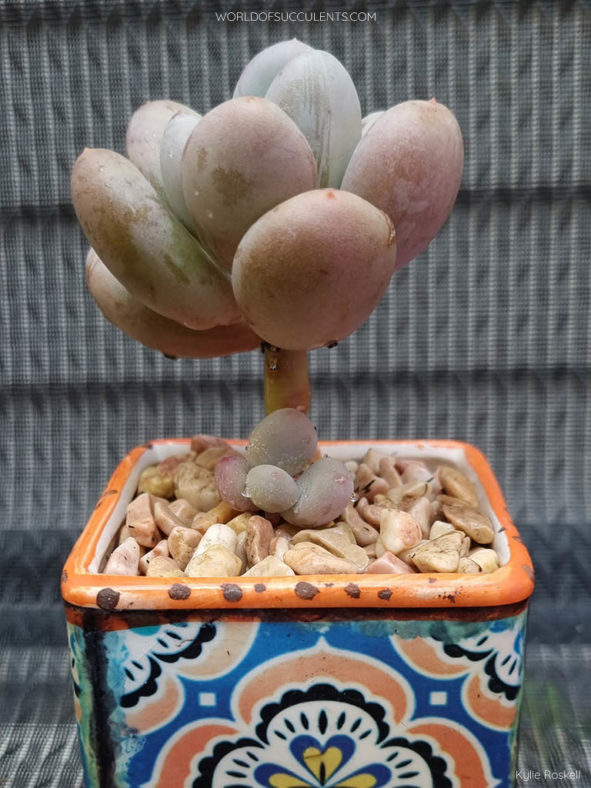Scientific Name
Pachyphytum 'Blue Haze'
Synonym(s)
Pachyphytum 'Blue Pearls', ×Pachyveria 'Blue Haze'
Scientific Classification
Family: Crassulaceae
Subfamily: Sedoideae
Tribe: Sedeae
Subtribe: Sedinae
Genus: Pachyphytum
Origin
Pachyphytum 'Blue Haze' is a hybrid that results from a cross between Pachyphytum bracteosum and Pachyphytum glutinicaule.
Description
Pachyphytum 'Blue Haze', also known as Pachyphytum 'Blue Pearls', is a beautiful, small succulent with erect or decumbent stems that bear chubby, glaucous leaves flushed pink and purple when exposed to intense sunlight. The stems are simple or few-branched near the base and can slowly grow up to 12 inches (30 cm) long. The leaves are fleshy, rounded, and have a small point at the tips. At first, they are clustered in rosettes, later more or less distant and only in the upper part of the stems. The rosettes can reach up to 4.4 inches (11 cm) in diameter.
The flowers are bell-shaped, rose-colored with sepals the same color as the leaves, and appear elegantly clustered on arching stalks in spring.
Pachyphytum 'Blue Haze' is also often sold as Pachyphytum bracteosum.

How to Grow and Care for Pachyphytum 'Blue Haze'
Light: Pachyphytum 'Blue Haze' thrives when exposed to direct sunlight. While it can tolerate partial shade, it may result in slightly rangy growth. When growing indoors, keep it near a sunny window.
Soil: This plant requires good drainage to maintain a healthy root system. While many growers prefer to create their own soil mix, commercial soil for succulents will work fine.
Temperature: Pachyphytum 'Blue Haze' is a winter grower and will stop actively growing when it warms up. It grows best in USDA Plant Hardiness Zones 10a to 11b, with average minimum winter temperatures ranging from 20 to 50 °F (-6.7 to 10 °C).
Watering: Although a winter grower, this plant is most active during spring and fall. Water thoroughly, then wait for the soil to dry out completely before watering again. During the winter, water sparingly. As the plant goes dormant in spring, it does not need to be watered except for arid conditions.
Fertilizing: To promote healthy growth and flower production, apply a water-soluble fertilizer diluted to half the recommended strength during the growing season.
Repotting: If growing Pachyphytum 'Blue Haze' in a container, repot it in a pot with drainage holes when it outgrows its pot. Give the plant a week or so to readjust before you water it.
Propagation: The easiest method to propagate this plant is by stem cuttings, although it can also be propagated from leaves. Even a leaf that drops off will root below the parent plant and produce a new plant. For best results, take cuttings in the spring.
Learn more at How to Grow and Care for Pachyphytum.
Toxicity of Pachyphytum 'Blue Haze'
Pachyphytum 'Blue Haze' is generally non-toxic to humans and pets.
Links
- Back to genus Pachyphytum
- Succupedia: Browse succulents by Scientific Name, Common Name, Genus, Family, USDA Hardiness Zone, Origin, or cacti by Genus
Photo Gallery
Click on a photo to see a larger version.


